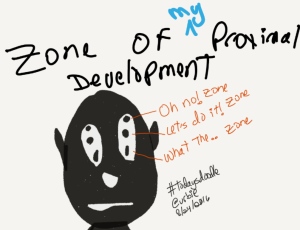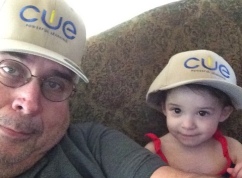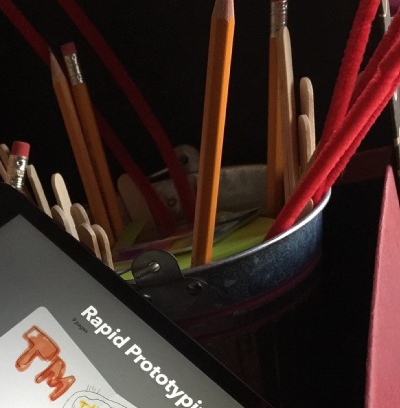PROLOGUE
My 2015 resolution was to be an unordinary instructional designer.
THE ZOMBIE ENGAGEMENT MODEL TO THE RESCUE
Mostly I design transformational learning experiences. It's a relative phrase, though. The learners I support are clinicians: doctors, nurses, and other healthcare staff. A good chunk of their professional development (PD) comes in the form of conferences. Conferences are mainly sit and get events, often accredited. My challenge in 2015 was to increase engagement. I accomplished this through butts-out-of-seats (BOOS) activities. My model: teachers and students in K-12.
At CUE15 in Palm Springs, CA I heard a teacher mention the Zombie Engagement Model (ZEM) of instruction. I'm pretty sure she made up the term. I haven't been able to turn up anything about it even after researching it for most of the year. It got me to thinking though. What are zombies after? Brains. They want our brains and the know-how that resides therein. Successful zombies get and consume brains by moving around. Woe to the stationary zombie.
Here's what months of research into the Zombie Engagement Model revealed.
1. Squiggle like you mean it, at every opportunity.

My work involves collaborating with subject matter experts (SME). It used to be that I would take pains to learn as much as I could about the content side of a project before meeting with a SME. No more. Since I started practicing design thinking the SMEs tend to do the heavy lifting. I squiggle what I think they say (dark lines in sketch). Then they tell me how it really works (red lines in sketch). This saves a lot of time and effort. In fact, in the projects I worked on in 2015 SMEs did most of the prototyping and testing. Want to be in the know? Squiggle.
2. Be seriousless.
I learned about Plotagon in 2015. It's an animation app on my iPad. I use it to mock up ideas and storyboards. Sometimes, heck most of the time, my ideas are so different others don't get them right away. Plotagon helps me make ideas visible. Sharing out an idea quickly engages like nobody's business. It gets people talking and moving ideas around. Want real engagement? Be seriousless. @ChristyCate gave me the heads-up about Plotagon.
3. Roll Your Own
I wanted 2015 to be unordinary. I didn't get there being conventional. It involved learning alongside a diverse group of people. Carly was one person I learned tons from. She's my granddaughter. We like shiny objects. I used to fear misses and fails. They don't faze Carly in the slightest. In a safe environment learning is play. Take risks. Get it right the nth time. Be unordinary.
4. Show your work
Share what you do with others. Blog about it. Tweet like you stole it. Which, when you stop to think about it, you might have. I don't live or work alone. I interact with a great many people in person and virtually. My work is influenced by those I'm with. Give credit where it's due and show your work. @JaneBozarth turned me on to this.
5. Slow Down
I learned about micro narratives last week. I used to ask questions to encourage others to share their story. Then I'd figure it out and move on. What I think I'll do next year is continue encouraging others to share but then ask them to figure out and share what it means. I think this will enable me to produce higher fidelity learning experiences. I was encouraged to do this by slowing down one day and giving a listen to Dave Snowden.
EPILOGUE
My blogging hit its stride this year. I have two blogs, PuzzlingMix and Connect the Dots. I don't have a set schedule for writing and posting. I do it for myself. They're reflective journals for the most part. Want to see how my year went: Check out the blogs.
I learn from teachers that teach in K-12 schools, mostly through meetups at EdCamps, CUE, AZK12 hackathons and the eLearning Guild. Most of what I learn is transferable to adults: strategies and activities. The true gems, like the Zombie Engagement Model, spike my interests. How Might We (HMW) is a phrase I repeated a lot in 2015.
My 2015 takeaways: learners ain't zombies. Through context rich (stories and scenarios) experiences learners get up, engage and collaborate with their peers and make their learning visible. Be the unordinary instructional designer.
Thank you to my PLN for helping and encouraging me to be unordinary. See you in 2016.



























